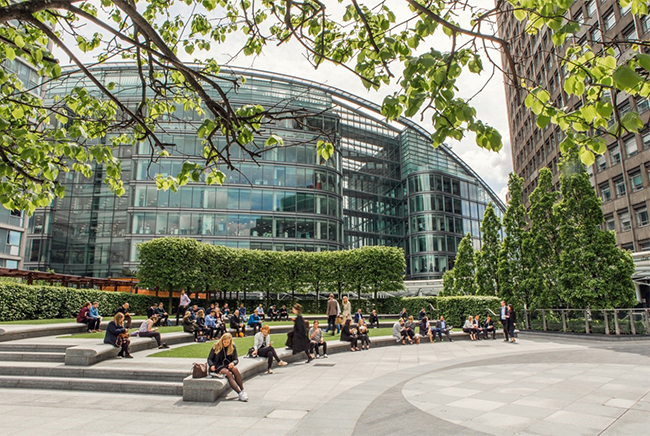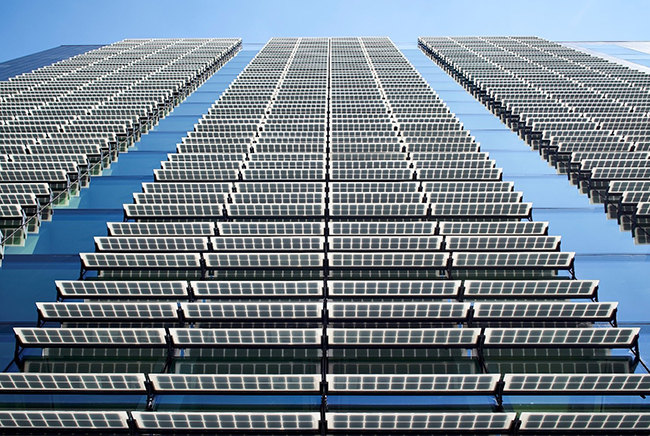This blog is part of a four-part series on city and business action to reduce emissions in the capital.
London’s buildings must be improved so that they emit less greenhouse gas emissions in the future. The recent IPCC report made the need for rapid improvement quite clear. We have 12 more years to cap average warming to 1.5°C or we face a climate catastrophe. Many experts agree that the technologies exist to make this a reality but there needs to be more action and it needs to be now.
In London, the Mayor has launched the London Business Climate Leaders (LBCL), an initiative aligning the climate actions of business and local government. Landsec is proud to be a member, alongside 10 other businesses who are known for pushing the sustainability agenda. We are working together to support the Mayor's bold target to make London zero carbon by 2050, with the Greater London Authority and three leading NGOs: CDP, C40 and The B Team.
More energy is used to heat and power buildings in London than for anything else, with workplaces responsible for around 40 per cent of London’s emissions. In order to tackle the issue at the pace needed, all LBCL companies have committed to set energy efficiency targets for 2020, 2030 and 2050 that put them on a course toward zero carbon buildings in London by 2050. Earlier this month we at Landsec were excited to host the second LBCL workshop, looking at buildings and energy efficiency.

Shared challenges
Common themes emerged as barriers to reaching the net zero goal: who is incentivised to improve energy efficiency in a multi-tenanted property? How can the increase in demand for data centres be managed? How can sustainable buildings be identified in the market? And finally, modern buildings and their numerous embedded systems are actually really complicated and hard to manage.
The LBCL group is clearly doing some amazing work in tackling these problems. The complexity of modern buildings is one which we have worked hard on at Landsec. We are moving away from the traditional maintenance regimes and are utilising the power of big data to carry out maintenance in a targeted and more holistic way. Our maintenance service provider captures data from thousands of Building Management Systems (BMS) points and smart meters. It provides us with a granular view of our buildings’ performance and enables accurate monitoring of our energy usage. It means we can direct our maintenance teams to tackle systems which look inefficient. We’re really excited about its potential and the early signs show that it is going to make a great contribution to our carbon reduction targets.
Addressing the performance gap
We also touched upon the problem that there isn’t a widely used and reliable energy efficiency benchmark for companies who are in the market for office space. A big problem we face is how a building delivers on its design expectations. The gap between the standards a building is built to – its theoretical score - and its real performance once in use by tenants and office workers is significant. It is known as the performance gap.
However, the industry is aware of the problem and seeking ways to assess how energy efficient a building is once it’s in use. For instance, at Landsec, we’re part of the new Design for Performance scheme, which is looking at developing an operational scoring system for the UK. At the LBCL workshop, BRE – the world’s leading buildings science centre - presented their BREEAM In-use standard, which assesses the operational performance of buildings. There is also work being done by the government and the UK-Green Building Council to improve energy performance certificates (EPC) to incorporate an element of in-use performance. The LBCL is a great way for us to share our experiences of these schemes and to help influence the debate in the wider industry.

Keeping the momentum
The value of the LBCL is that we can share great ideas with other dedicated companies and learn from one another. I’ve already planned to visit Siemens to hear more about a system for capturing heat from the river Thames they are involved with and hope to further discuss data centre operations with the likes of Sky. The group now has a long list of actions to take over the coming year to start turning our good intentions into real energy savings.
Momentum is going to be key to our overall success and I’m hopeful that the LBCL can generate that momentum with the businesses involved. I am looking forward to the next round of workshops to further explore our problems and successes together and to start developing solutions in the capital.
Read part one of this series on the green transport transition here.
